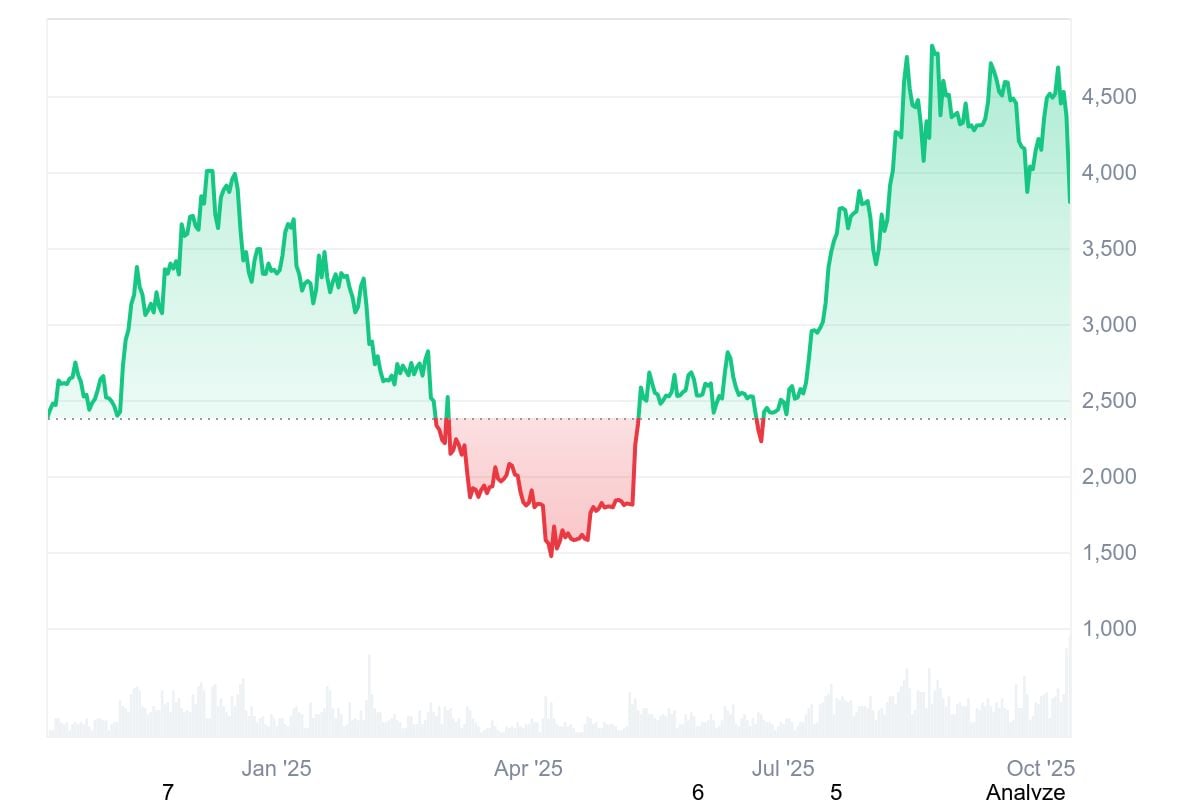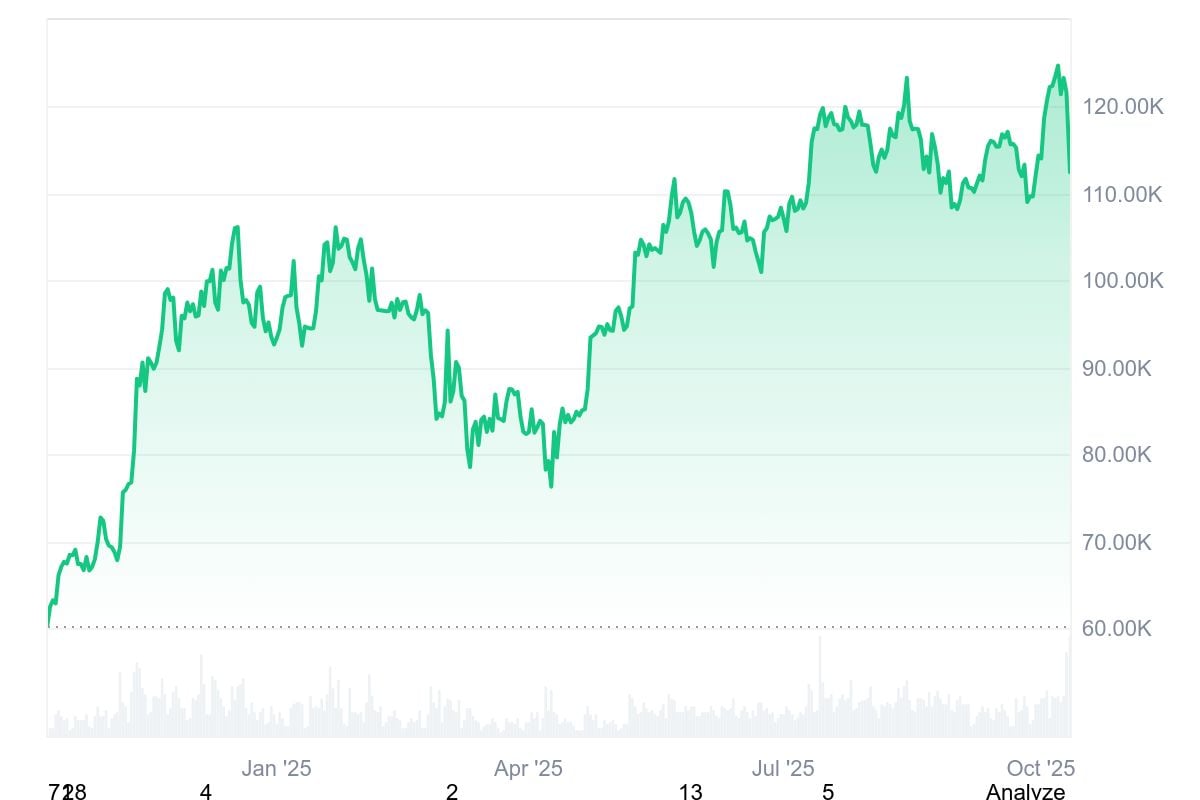The two giants of the cryptocurrency market, Bitcoin (BTC) and Ethereum (ETH), continue to dominate investors' attention as both assets post impressive gains in 2025. However, their paths differ in important ways that may define the next stage of digital asset growth into 2026.
Why Ethereum?
Ethereum will outperform Bitcoin in 2025, rising 30% since the beginning of the year compared to Bitcoin's 25% rise. From May to September, the price of ETH more than doubled, quickly erasing its previous underperformance against BTC.

In contrast to Bitcoin's proof-of-work (PoW) model, Ethereum's key differentiator remains its proof-of-stake (PoS) consensus mechanism. This distinction may seem technical, but it has important implications for investing. PoS allows investors to stake ETH and earn passive income through staking rewards in return. This dynamic introduces a revenue element to Ethereum ownership that cannot be replicated with Bitcoin.
Adding to Ethereum’s bullish momentum, two new Ethereum treasury companies were founded this summer and are actively accumulating ETH at scale. Their accumulation program is expected to create a stable long-term demand base for the asset and strengthen its market power.
Investor sentiment followed suit. Standard Chartered recently raised its price target for Ethereum, expecting it to reach $7,500 by the end of 2025 and up to $25,000 by 2028. Ethereum's price has increased by an impressive 59% year-over-year, underscoring the growing confidence of institutions and businesses in its future role as the foundational layer of Web3.
Why Bitcoin?
While Ethereum benefits from a staking economy and smart contract utility, Bitcoin continues to lead as the most resilient, decentralized and trusted digital asset.
In September 2024, BlackRock published an analysis highlighting Bitcoin's extraordinary resilience to political, economic, and geopolitical shocks. Over the past five years, Bitcoin has maintained its safe-haven status and demonstrated its role as “digital gold.”
Cathie Wood, CEO of Ark Invest, reinforced this view by calling Bitcoin a “world monetary system,” which she believes is a revolutionary concept that sets Bitcoin apart from all other crypto projects. Wood emphasized that Bitcoin's security record remains unparalleled. Layer 1 blockchains have never been hacked, and not all networks can claim this distinction.
Ark Invest, an early Bitcoin bull since 2017, continues to support the asset through both direct exposure and holdings in Bitcoin-related companies such as MicroStrategy (MSTR). The company’s long-term forecast remains very optimistic, with a price target of $2.4 million per BTC by 2030.
In the short term, Bitcoin’s technical structure supports this bullish stance. The 20-day (green) and 50-day (blue) EMAs show a steep upward slope, confirming strong buying momentum on the decline. The $117,000-$115,000 support zone where these EMAs are concentrated serves as a key level to maintain the bullish structure.

Meanwhile, the 100-day EMA (orange) is currently near $113,000, providing medium-term support. Bitcoin regained this level in late September, sparking the recent bull market.
Despite occasional fluctuations, both Bitcoin and Ethereum continue to show strong upward trends. Ethereum’s fundamental upgrade and growth in the treasury accumulation story could fuel a move towards $10,000, representing a 100% surge from current levels.
Meanwhile, Bitcoin maintains its dominance as the market's central asset and institutional investor favorite.

